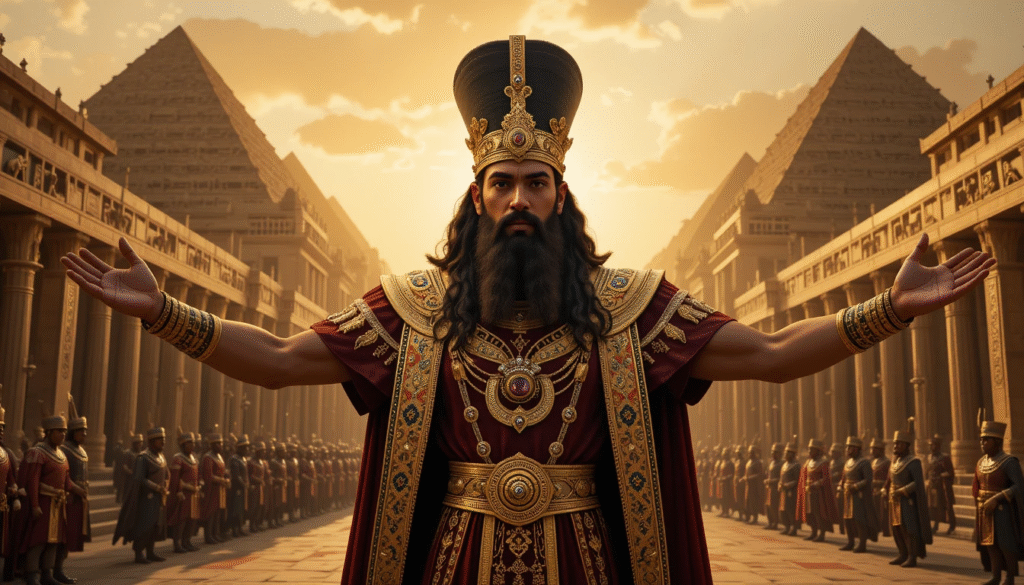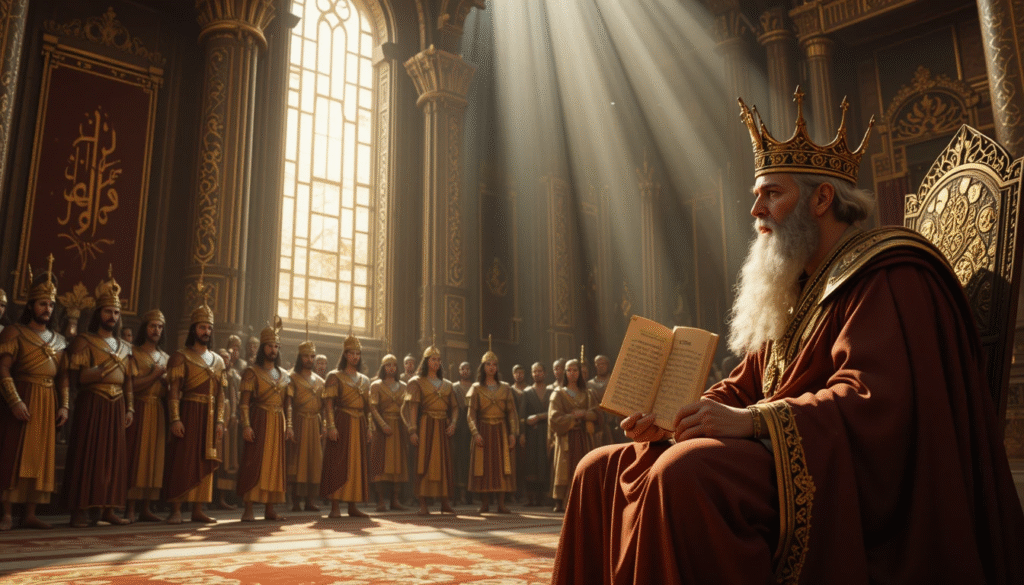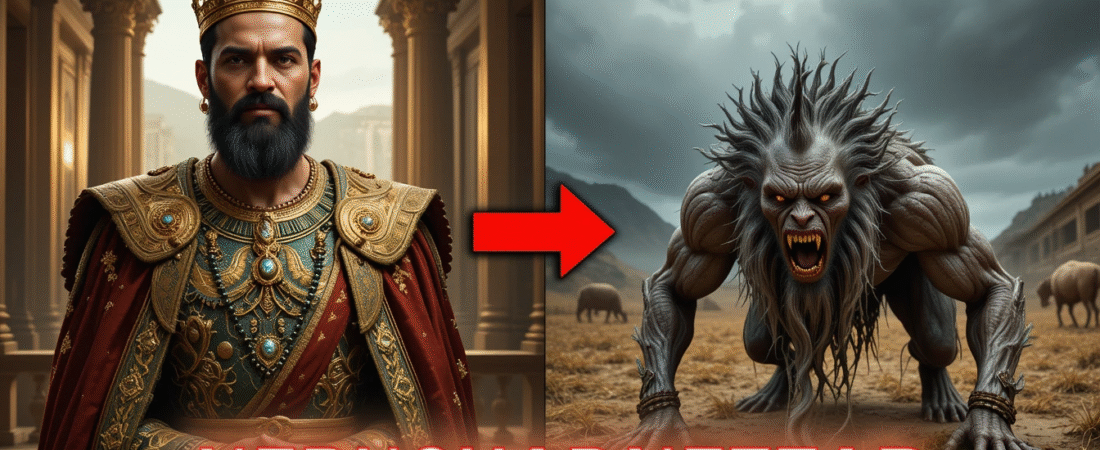Who was Nebuchadnezzar in the Bible?
Nebuchadnezzar II was the greatest king of ancient Babylon, ruling from around 605 to 562 B.C. He is most well-known in the Bible through the Book of Daniel, where he plays a major role in the spiritual testing of the Jewish people during the Babylonian exile.
His father, Nabopolassar, founded the Neo-Babylonian Empire. After his father’s death, Nebuchadnezzar expanded the empire by conquering Jerusalem and deporting its citizens to Babylon, including Daniel and his friends.
He is remembered for his military strength and massive building projects, especially the Hanging Gardens of Babylon—considered one of the Seven Wonders of the Ancient World, though the Bible does not mention them directly.
Nebuchadnezzar is significant in the Bible not just for his conquests, but because God used him as an instrument of judgment. In Jeremiah 27:6, God refers to him as “my servant,” showing that even powerful pagan kings were under divine authority.
His story blends politics, prophecy, and personal transformation. He starts as a proud ruler but eventually becomes a humbled man who recognizes the power of the one true God.
What role did Nebuchadnezzar play in the Book of Daniel?
Nebuchadnezzar is a central figure in Daniel chapters 1 through 4. He is the king who captures Jerusalem and takes Daniel and other young Israelites into captivity. He orders the training of these captives in the ways of Babylon, seeking to assimilate them into his court.
Daniel quickly earns the king’s favor by interpreting his dreams—something the Babylonian wise men could not do. This divine insight from God sets Daniel apart and opens doors to influence Nebuchadnezzar.
In chapter 2, Nebuchadnezzar has a troubling dream about a statue made of various materials. Daniel interprets it as a prophecy of coming kingdoms, showing that Nebuchadnezzar’s empire is just one part of God’s plan.
Later, in chapter 3, he erects a golden statue and demands everyone worship it. When Shadrach, Meshach, and Abednego refuse, he throws them into a fiery furnace—only to witness their miraculous survival.
By chapter 4, the narrative shifts dramatically as Nebuchadnezzar writes in the first person. He shares how pride led to his downfall, and how God temporarily removed his sanity until he acknowledged God’s sovereignty.
What dreams did Nebuchadnezzar have and what did they mean?

Nebuchadnezzar’s most famous dream is found in Daniel 2. In this dream, he sees a massive statue made of gold, silver, bronze, iron, and clay. A stone “cut out without hands” strikes the statue, breaking it into pieces.
Daniel explains that each material represents a kingdom—Nebuchadnezzar’s kingdom is the golden head, followed by lesser empires. The stone represents God’s eternal kingdom that will destroy human kingdoms and never be destroyed.
Later in Daniel 4, Nebuchadnezzar dreams of a giant tree that reaches the heavens. It is lush and provides shelter to animals and people. Then a “watcher” from heaven declares it must be cut down, and the king must live like a beast.
Daniel tells him this dream means Nebuchadnezzar will go mad and live like an animal until he acknowledges God’s sovereignty. This prophecy comes true, showing that no earthly power compares to God’s rule.
Why did Nebuchadnezzar build a golden image?
In Daniel 3, Nebuchadnezzar constructs a golden image, likely as a symbol of his authority. This statue stood 90 feet tall and was made entirely of gold, possibly in response to the dream in chapter 2 where he was only the “gold head.”
By making the entire statue gold, he may have been declaring that his kingdom would endure, ignoring the prophecy that other empires would follow.
He commanded everyone to bow to the image when music played. Refusing to do so meant death in a fiery furnace. This set the stage for the test of Shadrach, Meshach, and Abednego.
The event illustrates Nebuchadnezzar’s pride and need for control, as well as the courage of those who honored God even at great personal cost.
What happened in the fiery furnace under Nebuchadnezzar’s rule?
Shadrach, Meshach, and Abednego—three young Jews—refused to bow to Nebuchadnezzar’s image. They stood firm in their faith, saying in Daniel 3:17-18, “Our God is able to deliver us… but even if He does not, we will not serve your gods.”
Furious, Nebuchadnezzar ordered the furnace heated seven times hotter than normal. The fire was so intense it killed the men who threw the three into it.
But inside the furnace, Nebuchadnezzar saw four men walking unharmed—”and the fourth is like a son of the gods” (Daniel 3:25). This supernatural protection stunned him.
He called them out, and they emerged untouched. As a result, Nebuchadnezzar praised their God and promoted the men. This marked a turning point in his recognition of God’s power.
Why did God humble Nebuchadnezzar?

Nebuchadnezzar’s pride became his downfall. In Daniel 4:30, he boasts, “Is not this great Babylon I have built by my mighty power and for the glory of my majesty?”
At that moment, a voice from heaven declared his kingdom was taken from him. He lost his sanity and lived like an animal for seven years—eating grass, growing wild hair, and behaving like a beast.
This period of humiliation fulfilled the prophecy in his dream. It was God’s way of showing that He rules over kings and gives power to whomever He chooses.
After this time, Nebuchadnezzar looked to heaven, and his reason returned. He praised God, acknowledging, “Those who walk in pride He is able to humble” (Daniel 4:37).
How did Nebuchadnezzar’s reign impact the people of Judah?
Nebuchadnezzar conquered Jerusalem around 586 B.C., destroyed Solomon’s temple, and took thousands of Jews into exile in Babylon. This was part of God’s judgment on Judah for disobedience, as foretold by the prophets.
Under Nebuchadnezzar’s rule, Jewish life drastically changed. They were forced into a pagan culture, expected to learn Babylonian language and customs. Yet, many remained faithful to God.
Figures like Daniel, Ezekiel, and others lived during this exile. God used this time to shape the Jewish people, refine their faith, and prepare them for restoration.
Though Nebuchadnezzar was a harsh ruler, God used him as part of His bigger plan, both to discipline and preserve His people.
Did Nebuchadnezzar ever acknowledge God?
Yes, by the end of Daniel 4, Nebuchadnezzar publicly acknowledges the Most High God. After his period of insanity, he praises God as the one who lives forever and rules eternally.
He says in Daniel 4:34-35 that God’s dominion is everlasting, and “no one can hold back His hand.” These words reflect a sincere recognition of God’s power.
Although he began as a pagan ruler, Nebuchadnezzar’s story is one of gradual awareness. His declarations, though not necessarily a full conversion, show respect and submission to God’s authority.
His life illustrates that even the most powerful can be brought low and led to recognize the true King of kings.
What can we learn from Nebuchadnezzar’s story today?

Nebuchadnezzar’s life is a warning against pride and a call to humility. He had everything—power, wealth, and glory—but lost it all when he refused to honor God.
His restoration came only after he acknowledged God’s sovereignty. This teaches that true greatness lies in submission to God, not in building our own kingdoms.
His story also shows God’s mercy. Even when judged, Nebuchadnezzar was given a chance to repent and be restored.
For modern readers, his life reminds us that pride leads to ruin, but humility leads to wisdom. As Proverbs 16:18 says, “Pride goes before destruction, a haughty spirit before a fall.”
📚 Shop Our Favorite Ancient Texts
📖 The Book of Enoch 👉 https://amzn.to/4eCzsjj
📖 The Apocrypha Master Collection 👉https://amzn.to/3GvKWbM
📖 Ethiopian Bible in English (Complete 88 Books) 👉 https://amzn.to/45ToL9L
📖 The Book of Giants 👉https://amzn.to/44BDLqm
📖 The Dead Sea Scrolls Bible 👉 https://amzn.to/3Tp1ViV
📖 The book of Lilith 👉 https://amzn.to/4lA7Zkt
Also read more of our Insights here
